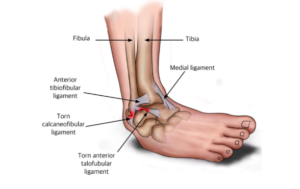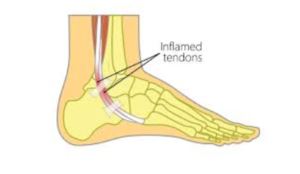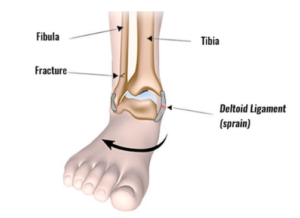Common Ankle Injuries
With the warmer weather coming in the clinic starts to see in influx of sports (or general activity) related injuries – a very common one being ankle injuries!
While people still get these in the cold weather (especially with cold, stiff/tight muscles) they tend to occur more often now everyone starts their Spring cleaning or health kick.In this article we’re discussing the most common kinds of ankle injuries we see:
Sprains
Fibers that join bone-to-bone are known as ligaments, and when our joints have sudden or heavy forces pushed into them (such as ‘rolling’ an ankle) these ligaments can become overstretched and damaged – which is known as a sprain. The level of damage here can range from a mild ‘stretching/scratching’ to the area – up to partial or complete tears of the bands.
Signs: This is often seen with swelling, redness and/or bruising – and tends to ease noticeably within 2 to 3 days of rest.

Strains
Similar to ligaments during sprains, the tendons (which attach muscle-to-bone) can be injured by excessive force or fast movement, but can also become painful over time through overuse/repetitive movements and holding positions of the foot & ankle (eg. keeping the foot up – then pushing down while driving long distances). Any of these situations can lead to a strain of the muscle and/or tendon around the ankle.
Signs: Same as with SPRAINS, except pain may also be noticed higher up the ankle or leg – or even travelling down into the foot.

Fractures & other bone injuries
As with all bones in the body – a hard hit to the ankle (eg. sport impact, landing from a height – especially on hard surfaces) or the typical ‘rolled ankle’ can lead to bone damage, which ranges from stressed bones without any actual ‘splitting’, through to minor fractures and finally: complete fractures (or breaking) of bones.
Signs: Same as SPRAINS & STRAINS, however the level of redness, heat, swelling & pain generally does not reduce to a comfortable level – even after several days of rest.

Other ankle problems
Some pains can occur slowly or suddenly in the ankle – with no apparent cause and with no way to reasonably reduce the amount of pain. If you have a strange/mysterious ankle problem it is important to consult either your Podiatrist or GP as deeper investigation (often by X-Ray, Ultrasound or MRI) may be required.
Treatment & timing:
There are different ways to manage ankle injuries depending on when they’ve occurred, and what the specific injury is, and how severe the injury is – this can range from simple icing to a protective Moon/CAM boot or walker.
In further videos we’re going to explore how podiatry can help treat these problems in clinic, how you can manage & prevent them at home, and what more intensive options are available.
Until next time, have fun and keep on walking!

